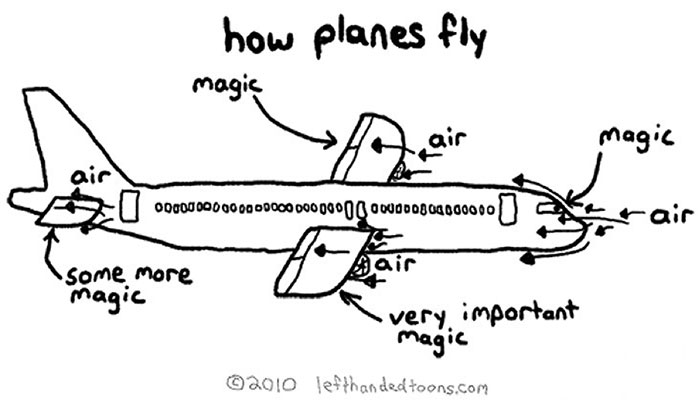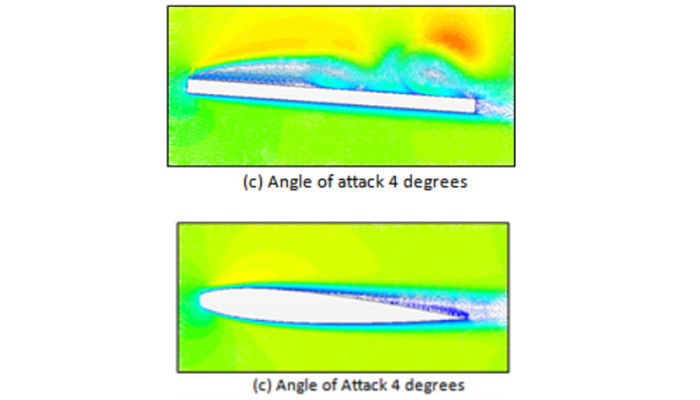Most plane passengers have looked out the window during a flight and wondered how on earth does this great hulking thing stay up here?
The short answer is engineering magic using differences in air pressure, and Newton’s Third Law, to generate enough lift to exceed the force of gravity.

The long answer: When air flows over any flat plate at an angle, like when you hold your hand out of a car window on the highway, air is re-directed down.
According to Newton’s Third Law the air pushes back up on your hand and congratulations you have lift! The higher the angle, called the angle of attack, the greater the lift (Coefficient of lift, Cl), up to a point of failure called ‘stall’ but we are talking about how planes stay up so we can ignore that.
You can fly faster (Velocity, V), to generate more lift. And for those who would like to delve deeper into the science … How much? Exactly this much.
If you did hold your hand out the window, you quickly realise how much the air is also pushing back on your hand, this is called drag.
The trick (and it also helps to have an Aeronautical Engineering Degree), is creating the most lift with the least drag (Lift to Drag ratio), otherwise you would need lots of fuel to get anywhere, which is more weight, which means we need to fly faster, which burns fuel faster…you can start to see the circular nature of this problem.
This is where the curved profile called an airfoil comes in. These profiles are used on all wings and smoothly guides air over its upper and lower surfaces to generate lift.

Lift off: Comparison of flow over a flat plate (top image) and an airfoil (bottom image). As you can see, the blue recirculating flow - which creates drag - is much smaller in the airfoil profile.
As the air close to the surface flows over the top, it accelerates (Venturi Effect) and the pressure drops (Bernoulli Effect). The free stream air above the wing then wants to equalise the pressure near the wing surface so it pushed down on the flow and ‘attaches’ the flow (Coanda Effect). If the angle gets too high, the pressure is not enough to keep it attached and we get a stalled wing.
- Video: How air flows across a wing
An airliner wing can produce around 7 kilopascals of lift in level flight. That’s not much (your tyres are inflated to about 220 kilopascals) but it adds up over the entire wing surface. A Boeing 747’s wings have a surface area of about 510 square metres and can produce roughly 385 tonnes of lift.
Comparing the advances in the latest 787 with the 747, introduced with Pam American in 1970, the crucial Lift-to-Drag ratio has been improved from 18 to 21, a massive 15% reduction in drag. Coupled with advances in material science and engine performance it's enough to keep the plane in the sky for anything up to 15 hours. Or as in the case of last weekend’s historic Qantas flight from New York to Sydney – 19 hours and 16 minutes.
Now if you want to know how helicopters fly, they just beat the air into submission.
Byron Wilson is Program Manager in the School of Engineering in the Faculty of Science and Engineering, Macquarie University.



